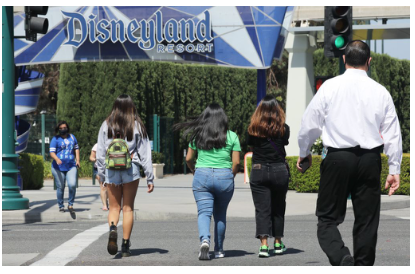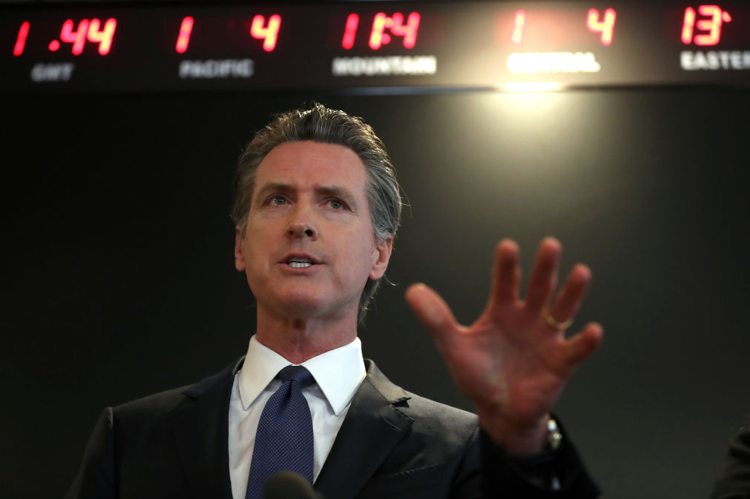CommentsGUEST WORDS-As COVID-19 cases, hospitalizations and positivity rates have soared across most of California in the last few weeks, political and public health leaders have sounded the alarm with increasingly dire warnings.
But there are three words you probably haven’t heard from any of them: We were wrong.
It doesn’t take the wisdom of hindsight to know that the way state and local officials barreled ahead with reopening would lead to disaster. On June 1, this website launched a series on the dangers facing frontline workers with an introduction by editor-in-chief Steven Mikulan entitled “Is the Golden State Reopening Too Soon?”
Two weeks later, we published a story by reporter Dan Ross that questioned whether LA County – which for months has accounted for a disproportionately high percentage of California’s COVID-19 cases and deaths – was moving too fast to lift restrictions. As Ross wrote, “The latest numbers reveal some worrying trends. The transmission rate. . .appeared last week to be climbing once again. On June 11, the county recorded the highest one-day jump in cases since the pandemic began.”
In Ross’ story, infectious disease expert John Swartzberg stated simply, in June, “It makes little sense to press forward in bringing things ‘back to normal’ when things are not normal.”
That, however, is exactly what happened. The county’s May 8 reopening of some retail outlets for curbside pickup was followed three weeks later with the unshuttering of hair salons, barbershops and in-person dining. That same day, May 29, 50 new COVID-19 deaths were announced by the county’s public health department. By early June, Angelenos, most of them unmasked, were crowding beaches as well as frequenting restaurants. Today saw LA County record its highest number of COVID-related hospitalizations this year.

The loosening of restrictions in LA and other parts of the state was sanctioned by Gov. Gavin Newsom, who deferred to local leaders as they rushed to remove lockdown orders. Public policies, of course, aren’t created in a frictionless vacuum, like exercises in a Sim computer game. While Newsom repeatedly said that science, not politics, determined his response to the pandemic, the anti-lockdown demonstrations around the time of Memorial Day clearly rattled him as well as LA Mayor Eric Garcetti, and they, as well as many other leaders, quickly began dismantling their own strict and effective measures. The governor, a shrewd politician, likely didn’t want to give Republicans any rallying issue and become the next Gray Davis, who was recalled in 2003 by voters and replaced by Arnold Schwarzenegger after popular discontent with Sacramento boiled over.
Though Newsom received rave reviews for his early actions, by the end of May editorial writers and members of his own party were questioning his authority to unilaterally impose a state of siege. Some law enforcement officials around the state were also declaring that they would not enforce the governor’s decrees. Newsom probably saw a near future in which growing numbers of people would ignore the restrictions, abetted by defiant sheriffs who refused to cite them. That would have led to a very messy crisis. Then came the Black Lives Matter protests – Newsom and the state’s mayors could have tried to ban or limit those protests, but the political cost would have been high.
In short, as John Barry wrote this week in The New York Times, “When you mix science and politics, you get politics.”
In LA and some other parts of the state, there was never any credible scientific basis to relax the stay-at-home measures put in place in mid-March. On April 23, as we reported, LA County accounted for 54 percent of those who had died from the virus in California, even though only 25 percent of the state’s population lives in LA. Nearly three months later, that figure remains unchanged.
While some dismissed these numbers by citing the high percentage of deaths occurring at nursing homes, there was clearly more to the story. As LA County relaxed restrictions in May and June, the number of daily positive cases also continued to rise. These statistics too were largely explained away by elected leaders and public health officials, who cited expanded testing capacity. Few were willing to acknowledge that the reopening of public spaces was setting the stage for a huge spike in cases – and, eventually, hospitalizations and deaths.
(Danny Feingold is publisher of Capital & Main and has written for the Los Angeles Times, the San Francisco Chronicle, Salon, and other publications.) Top Photo: Justin Sullivan/Getty Images. Middle photo: Mario Tama/Getty Images. Prepped for CityWatch by Linda Abrams.














